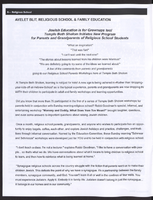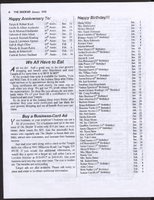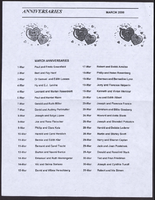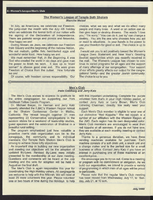Search the Special Collections and Archives Portal
Search Results

Meeting minutes for Consolidated Student Senate, University of Nevada, Las Vegas, April 03, 1979
Date
1979-03-03
Archival Collection
Description
Includes meeting agenda and minutes with additional information about the requests for funds, tentative schedule, posters, and the judicial council meeting.
Text

Alpha Kappa Alpha Sorority program calendar
Date
2003-12 to 2004-12
Archival Collection
Description
From the Alpha Kappa Alpha Sorority, Incorporated, Theta Theta Omega Chapter Records (MS-01014) -- Chapter records file.
Text
Pagination
Refine my results
Content Type
Creator or Contributor
Subject
Archival Collection
Digital Project
Resource Type
Year
Material Type
Place
Language
Records Classification








